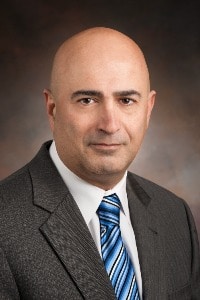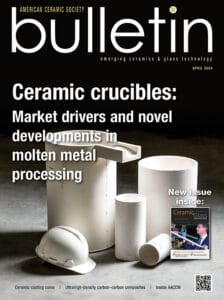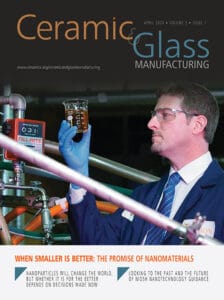 Vahid Majidi is responsible for the management, operation, and strategic direction of Savannah River National Laboratory (SRNL). Employing approximately 1,000 technical and support staff, SRNL conducts research and development for diverse federal agencies, providing practical, cost-effective solutions for the nation’s environmental, nuclear security, energy and manufacturing challenges. As the U.S. Department of Energy’s (DOE) Environmental Management Laboratory, SRNL provides strategic scientific and technological direction and program support for the nation’s legacy waste clean-up program.
Vahid Majidi is responsible for the management, operation, and strategic direction of Savannah River National Laboratory (SRNL). Employing approximately 1,000 technical and support staff, SRNL conducts research and development for diverse federal agencies, providing practical, cost-effective solutions for the nation’s environmental, nuclear security, energy and manufacturing challenges. As the U.S. Department of Energy’s (DOE) Environmental Management Laboratory, SRNL provides strategic scientific and technological direction and program support for the nation’s legacy waste clean-up program.
Majidi is a former member of the senior executive service with direct reporting responsibilities to the U.S. Secretary of Defense, U.S. Director of National Intelligence and the Director of the Federal Bureau of Investigation. He has more than 30 years of experience in the areas of chemistry, measurement science and technology, national and homeland security, science and technology policy, and nuclear nonproliferation.
Majidi previously served as the Deputy Assistant Secretary of Defense for Nuclear Matters, responsible for nuclear weapon surety and the acquisition and modernization of the nuclear weapons stockpile. From 2006-2012, Dr. Majidi served as Assistant Director for the Federal Bureau of Investigation’s Weapons of Mass Destruction (WMD) Directorate, responsible for coordinating and managing its equities, activities, and investigations involving WMD. In 2003, he was appointed Chief Science Advisor to the Department of Justice (DOJ) and was detailed to DOJ from Los Alamos National Laboratory (LANL), where he coordinated science and technology policy among DOJ component agencies and with state and local law enforcement entities. Dr. Majidi also served as the Chemistry Division Leader at LANL and was a tenured associate professor of chemistry at the University of Kentucky.
Presentation title: Glass the ultimate sequester and self-sustaining product
Abstract: Almost fifty years ago, SRNL materials scientists began their endeavor to address challenges pertaining to the safe disposal of nuclear waste. These efforts came to fruition on April 29, 1996 when the Savannah River Site Defense Waste Processing Facility poured the first canister of high-level nuclear waste stabilized and encapsulated in glass. The aim was not only to incorporate long lived radionuclides into a stable waste form but to demonstrate with confidence that radionuclides would remain in a durable glass under unpredictable climate conditions at a geologic time scale of thousands of years. Without using radioactive waste for testing, researchers developed simulated waste glasses to evaluate hundreds of compositions to determine the controlling factors suppressing the release of radionuclides. Since those early days, SRNL’s glass technical expertise has been subsequently applied for the immobilization of other waste streams in the U.S. and Internationally. We have also developed extensive skill sets related to fundamental and applied glass technology. Now that vitrification is accepted as the preferred embodiment for nuclear waste disposal, SRNL is leveraging our decades of experience in glass science to develop cutting-edge technologies based on sustainability and the environment that will revolutionize the way the world looks at glass.
Subscribe to Ceramic Tech Today

Don’t miss the latest ceramic and glass materials news. Receive the CTT newsletter to your email three times a week by subscribing at this link.
Subscribe to Ceramic & Glass Manufacturing Weekly

Don’t miss the latest ceramic and glass business news. Receive the C&GM Weekly newsletter to your email every Monday by subscribing at this link.


